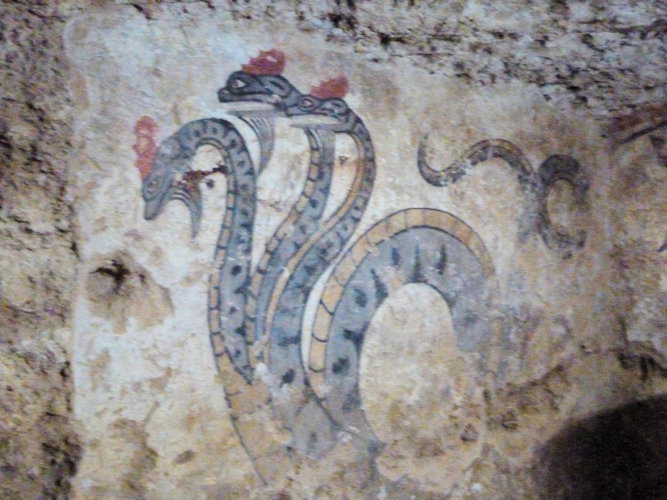

- The three-headed snake depicted in the chamber is one of the many monsters which populated
the underworld in the Etruscan funerary imagination of the time
- Le serpent à trois têtes de la chambre funéraire représente l'un de ces innombrables monstres qui
peuplaient le monde de l'au-delà dans l'imaginaire funéraire étrusque de l'époque
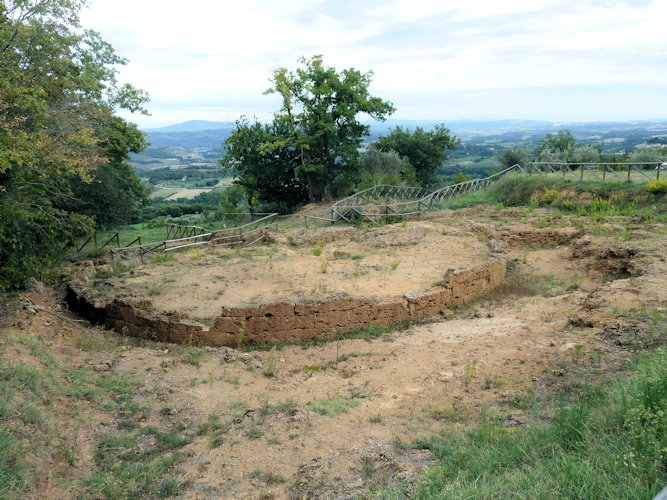

- The semicircular podium-altar, built of travertine blocks, was excavated between 2007 and 2009.
This sacred place was used for funeral rites in honor of the deceased.
- Le podium-autel semi-circulaire, construit en blocs de travertin, a été excavé entre 2007 et 2009.
Ce lieu sacré était utilisé pour des rites funéraires en l'honneur des défunts.
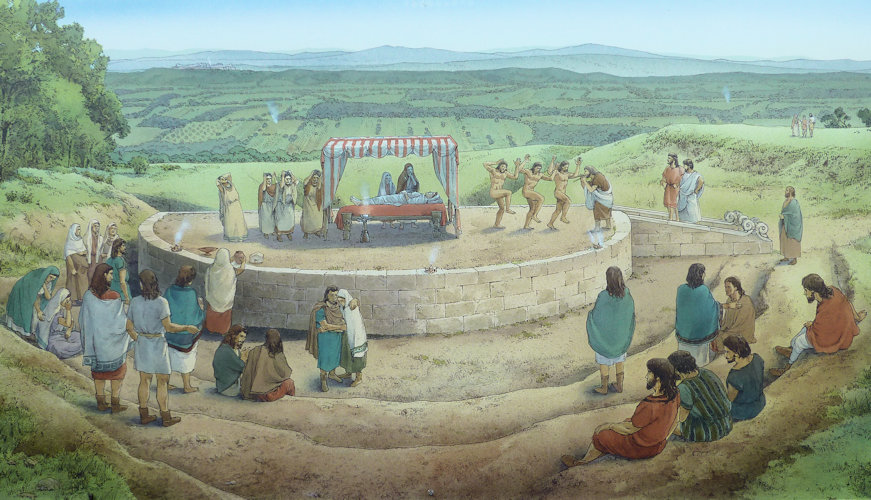

- A depiction of the funeral rites in honor of the deceased, as they would have happened in the Etruscan society
- Une représentation des rites funéraires en l'honneur des défunts, comme ils auraient eu lieu dans la société étrusque
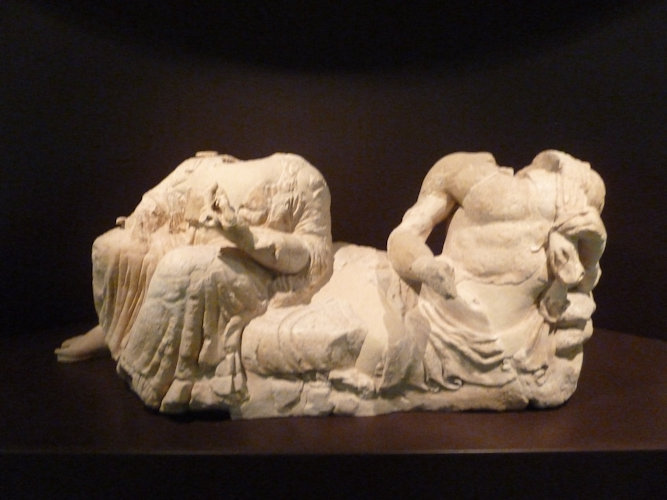

- A cinerary group of fetid stone with deceased and demon Vanth from Tomb 13 at the Pianacce
necropolis is displayed at the Civic Archaeological Museum of Sarteano (End of 5th Century BC)
- Un groupe cinéraire en pierre fétide d'un défunt et du démon Vanth provenant de la Tombe 13 à la
nécropole Pianacce est exhibé au Musée Archéologique Municipal de Sarteano (Fin du 5e siècle av. J.-C.)
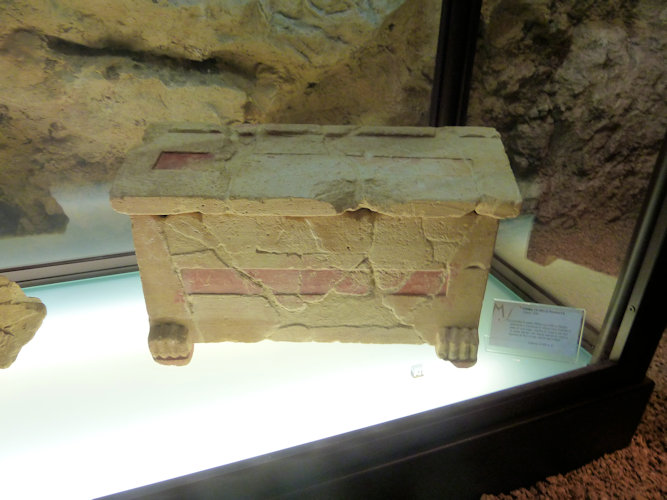

- An ossuary in fetid stone recovered from Tomb 14 at the Pianacce necropolis in 2006 (450 years BC)
- Un ossuaire en pierre fétide récupéré de la Tombe 14 à la nécropole Pianacce en 2006 (450 ans av. J.-C.)
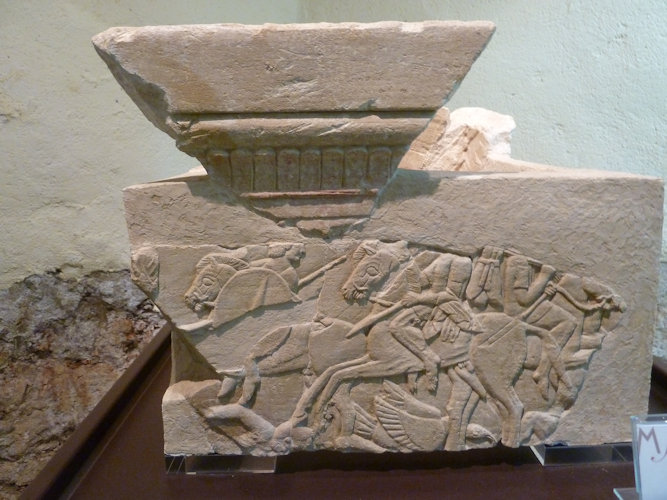

- An ossuary made of fetid stone, which was found in Tomb 13 at the Pianacce necropolis in 2006,
depicts a battle scene with knights (around 470 BC)
- Un ossuaire en pierre fétide, qui a été trouvé dans la Tombe 13 à la nécropole Pianacce en 2006,
représente une scène de bataille avec des chevaliers (environ 470 av. J.-C.)
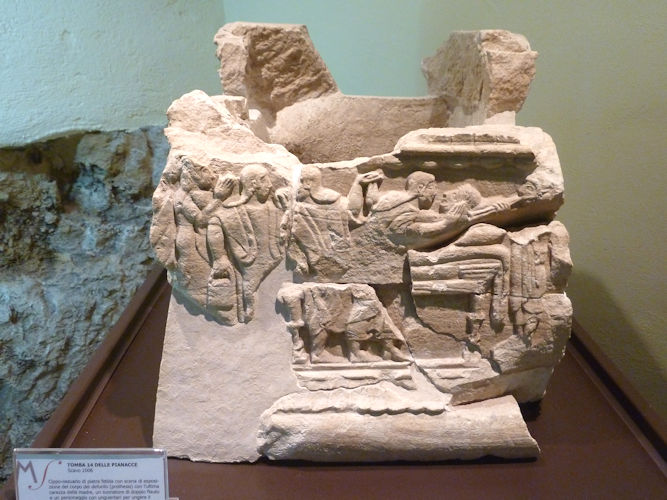

- A memorial ossuary of fetid stone representing the deceased receiving a last caress from his
mother, recovered from the Tomb 14 at Pianacce necropolis in 2006
- Un ossuaire commémoratif en pierre fétide représentant le défunt recevant une dernière caresse
de sa mère, récupéré de la Tombe 14 à la nécropole Pianacce en 2006
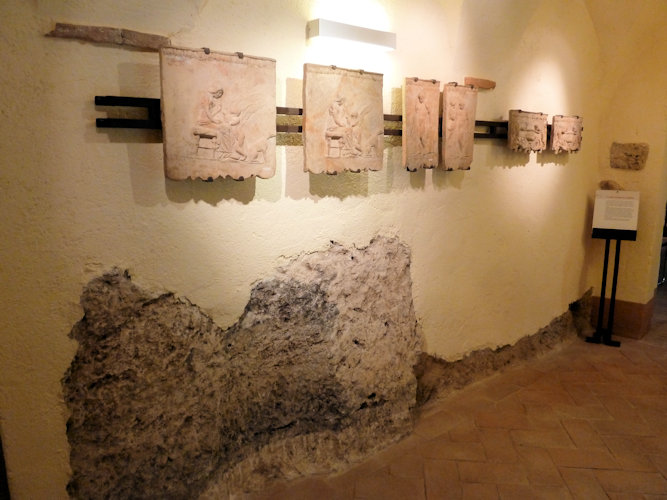

- Six architectural terracotta reliefs of the Campana type that were part of a frieze that decorated
the upper part, inside or outside, of a building of the Augustan age
- Six reliefs architecturaux en terre cuite de type Campana qui faisaient partie d'une frise qui ornait
la partie supérieure, à l'intérieur ou à l'extérieur, d'un immeuble de l'époque d'Auguste
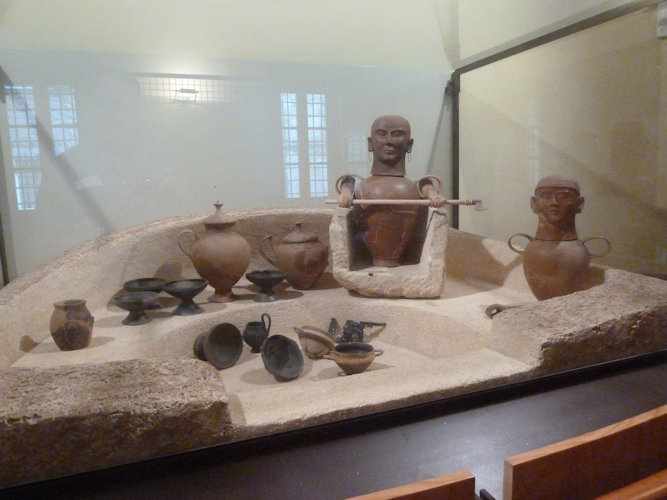

- A female canopic jar on a throne, which comes from the necropolis of Macchiapiana, is displayed
at the Civic Archaeological Museum of Sarteano. The urn certainly contained the ashes of an
upper-class woman (630-620 BC)
- Un vase d'une femme canope sur un trône, qui vient de la nécropole de Macchiapiana, est exhibé
au Musée civique d'archéologie de Sarteano. L'urne contenait certainement les cendres d'une femme
de la classe supérieure (630-620 av. J.-C.)
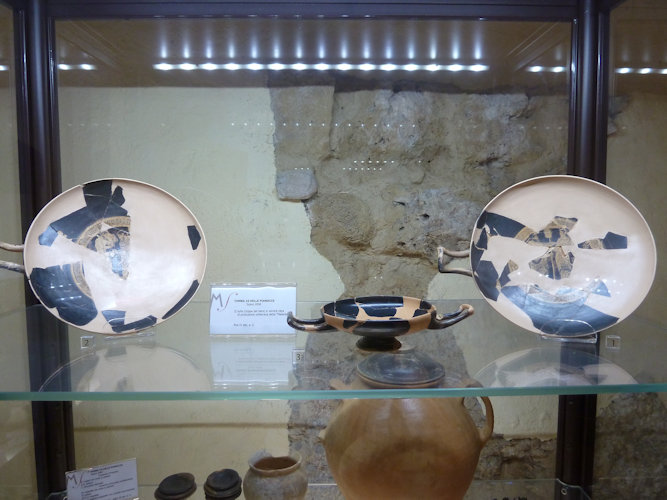

- Black-glazed bowls and drinking vessels, attributed to the Malacena group and manufactured in the
Etruscan city of Volterra, were found in Tomb 10 at the Pianacce necropolis in 2004 (End of the
4th century BC)
- Des bols et récipients pour boire vernissés en noir, attribués au groupe Malacena et fabriqué dans
la ville étrusque de Volterra, ont été retrouvés dans la Tombe 10 à la nécropole Pianacce en 2004
(fin du 4e siècle av. J.-C.)
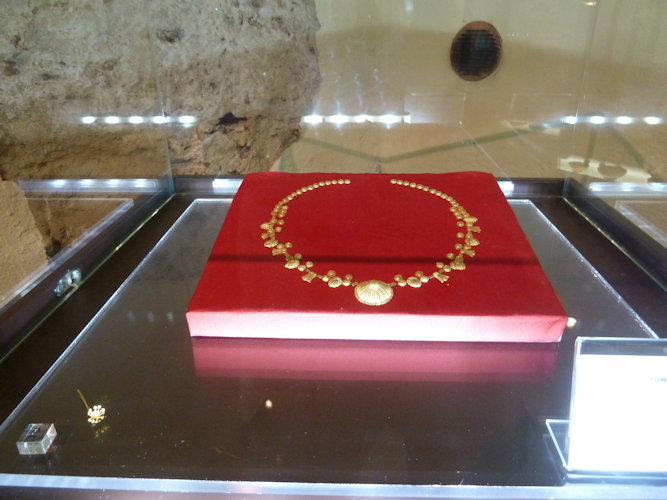

- A gold necklace recovered from Tomb 8 at the Pianacce necropolis is displayed at the Sarteano
Museum (4th - 3rd Century BC)
- Un collier en or récupéré de la Tombe 8 à la nécropole Pianacce est exhibé au Musée de Sarteano
(4e-3e siècle av. J.-C.)
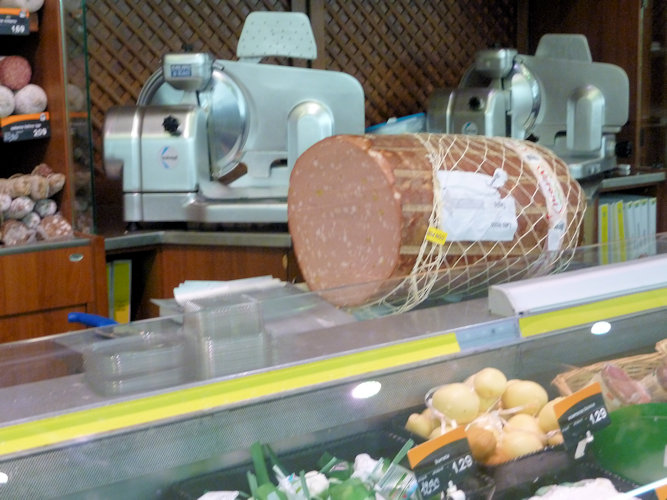

- A large mortadella sausage, with a diameter of approximately 16 inches. This real Italian
mortadella is the best one we ever had.
- Un grand saucisson de mortadelle, d'un diamètre d'environ 40 centimètres. Cette véritable
mortadelle italienne est la meilleure que nous ayons jamais eue.